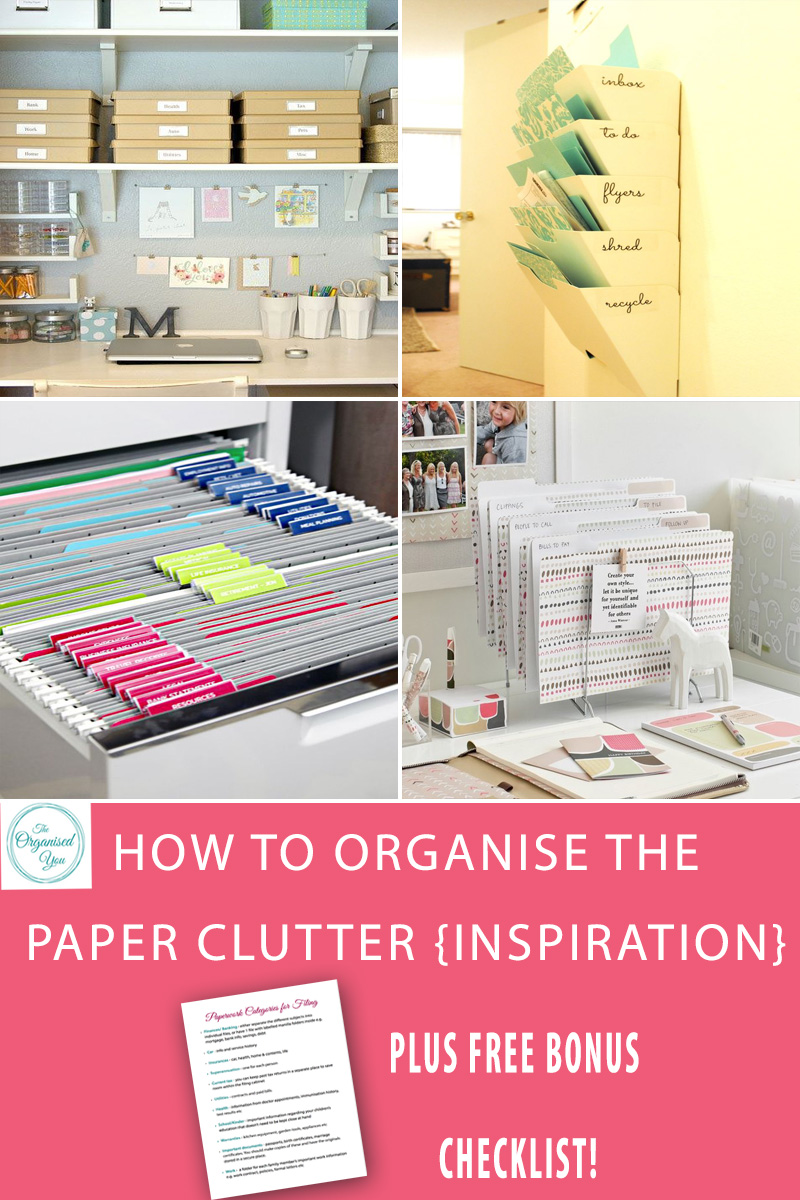Mastering Paperwork: Simple Categorization Tips for Efficiency

Managing paperwork efficiently is critical for both personal and professional success. Imagine navigating through your day with a streamlined system where documents are instantly accessible, tasks are sorted, and your desk is clutter-free. The benefits of proper document organization extend beyond mere aesthetics; they lead to reduced stress, saved time, and increased productivity. This article delves into how to categorize your paperwork effectively, offering a blueprint for organizing, storing, and accessing your documents effortlessly.
The Importance of Document Organization


Before we delve into the methods, let’s understand why organizing your paperwork is paramount. Here’s what effective document organization brings to the table:
- Reduced Stress: Knowing where everything is can significantly lower anxiety when searching for a critical document.
- Time Savings: No more endless rummaging for that one piece of paper; with an organized system, retrieval is quick.
- Productivity Boost: With a clean workspace and clear categories, your focus remains on work, not on sorting through piles of paper.
- Professional Image: A well-organized office or home reflects professionalism and a disciplined approach to work.
💡 Note: Document organization is not just a one-time task but an ongoing process.
Understanding Your Paperwork


To categorize paperwork effectively, start by:
- Sorting Documents: Go through all the papers you have and understand what each represents. Is it an invoice, a contract, personal information, or something else?
- Defining Categories: Develop categories that are relevant to your daily operations or personal life. Some common categories might include:
- Financial (bills, receipts, bank statements)
- Legal (contracts, agreements, certificates)
- Health (medical records, insurance policies)
- Personal (memorabilia, personal letters, photos)
Each document should have a home, and defining these categories is the first step toward creating an efficient system.
Designing Your Categorization System


Here’s how you can design your categorization system:
- Labeling: Use clear, specific labels for folders or binders. “Financial 2023” or “Medical Records” helps in quick identification.
- Color Coding: If visual cues help, assign colors to categories for easier visual sorting.
- Alphabetizing: Within each category, arranging documents alphabetically or by date can speed up retrieval.
Remember, your system should be intuitive, reflecting your needs and the frequency of document access.
📝 Note: Ensure your labels are straightforward and can be understood by anyone if needed.
Implementing Your Categorization


Once your system is designed, here’s how to bring it to life:
- Paper Sorting: Begin by sorting all your current papers into their new categories. Keep a shredder or recycle bin handy for unnecessary items.
- Storage: Consider different storage solutions:
- Filing cabinets for heavy use or long-term storage.
- Binders or accordion files for active documents that need easy access.
- Drawers for smaller, daily-used items like notebooks or stationery.
- Digital Backup: Where possible, digitize documents to reduce physical clutter. Use cloud storage or external drives for backups.
This implementation phase is crucial, as it sets the stage for your ongoing organization routine.
Maintaining the System


Effective categorization requires regular upkeep:
- Daily Sorts: Spend a few minutes at the end of each day to sort through new paperwork.
- Monthly Reviews: Once a month, review your categories, purge unnecessary documents, and ensure everything is in its place.
- Sticking to the System: Avoid letting new papers accumulate on your desk by immediately categorizing them.
Regular maintenance ensures your system continues to work for you, not against you.
🔍 Note: Your maintenance schedule should be practical for your lifestyle or work environment.
In summary, mastering paperwork through simple categorization tips can significantly enhance your efficiency. By understanding the importance of document organization, defining categories, designing an intuitive system, implementing it thoroughly, and maintaining it consistently, you can create a workflow where papers are not just managed but utilized effectively. Remember, the journey to organized paperwork is a marathon, not a sprint; it requires patience, commitment, and ongoing attention to detail. Embrace the process, and your work and personal life will thank you for it.
What if I have too many papers to categorize initially?

+
Start by dedicating some time each day or week to sort through the backlog. Tackle small sections at a time to avoid overwhelm.
How do I categorize documents that fall into multiple categories?

+
Create a digital or physical cross-reference system or use tags to indicate multiple categories, allowing you to file the document under the most relevant category with additional reference notes.
Can I use software to help with document organization?

+
Absolutely! Document management software can help in categorizing, tagging, and searching for documents digitally, which can complement your physical filing system.
What should I do with confidential documents?

+
Keep confidential documents in a secure, locked location or use encrypted digital storage with strong password protection.



